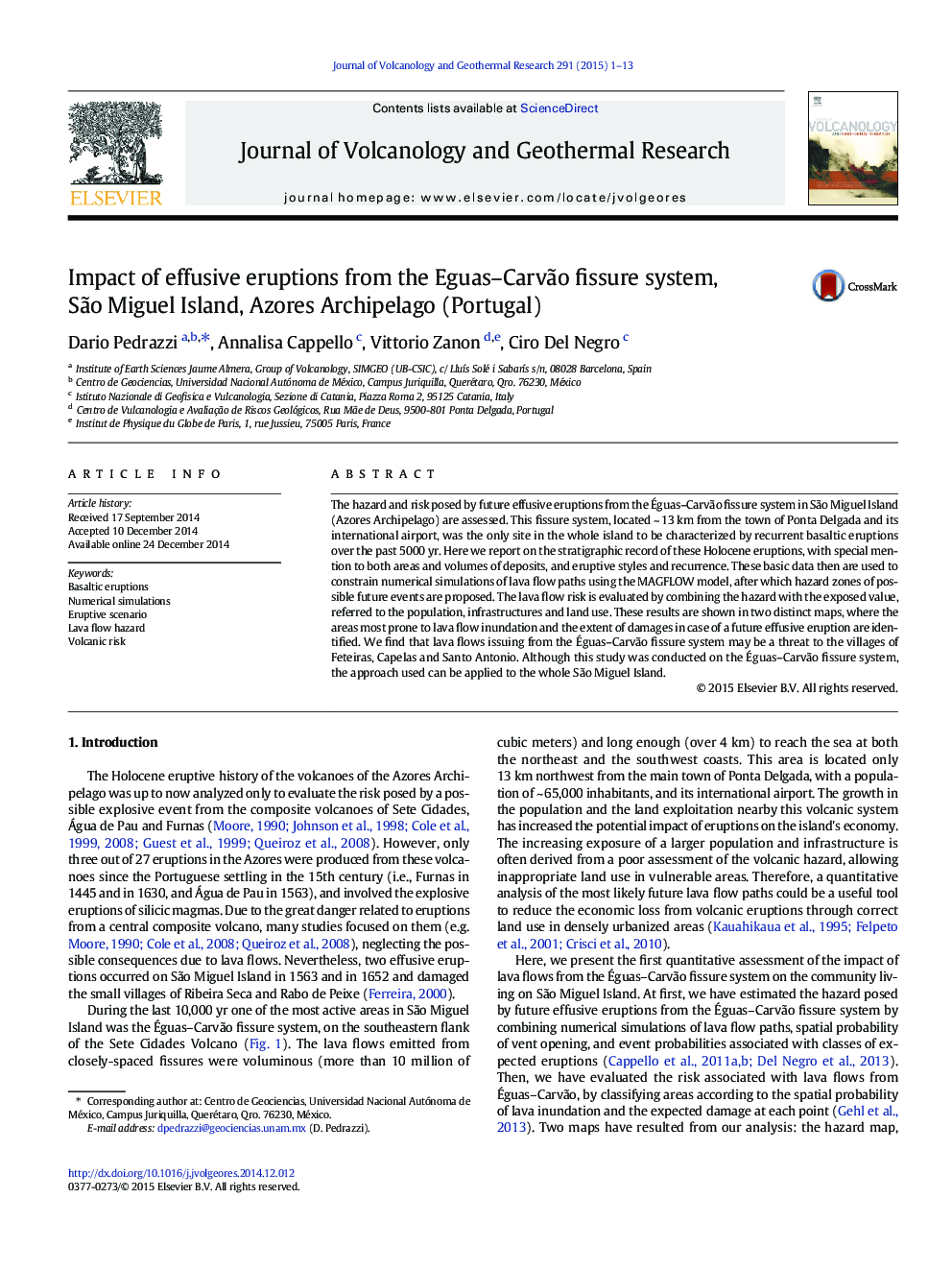| Article ID | Journal | Published Year | Pages | File Type |
|---|---|---|---|---|
| 4712928 | Journal of Volcanology and Geothermal Research | 2015 | 13 Pages |
•The volcanic history of the Éguas–Carvão fissure system is reconstructed.•Vent opening probability is based on the spatial distribution of eruptive fissures.•Lava flow paths simulated by MAGFLOW model are used to assess the hazard and risk.•Population, anthropogenic factors and land use are mapped to assess the risk exposure.•Main villages exposed to lava inundation are Feteiras, Capelas and Santo Antonio.
The hazard and risk posed by future effusive eruptions from the Éguas–Carvão fissure system in São Miguel Island (Azores Archipelago) are assessed. This fissure system, located ~ 13 km from the town of Ponta Delgada and its international airport, was the only site in the whole island to be characterized by recurrent basaltic eruptions over the past 5000 yr. Here we report on the stratigraphic record of these Holocene eruptions, with special mention to both areas and volumes of deposits, and eruptive styles and recurrence. These basic data then are used to constrain numerical simulations of lava flow paths using the MAGFLOW model, after which hazard zones of possible future events are proposed. The lava flow risk is evaluated by combining the hazard with the exposed value, referred to the population, infrastructures and land use. These results are shown in two distinct maps, where the areas most prone to lava flow inundation and the extent of damages in case of a future effusive eruption are identified. We find that lava flows issuing from the Éguas–Carvão fissure system may be a threat to the villages of Feteiras, Capelas and Santo Antonio. Although this study was conducted on the Éguas–Carvão fissure system, the approach used can be applied to the whole São Miguel Island.
